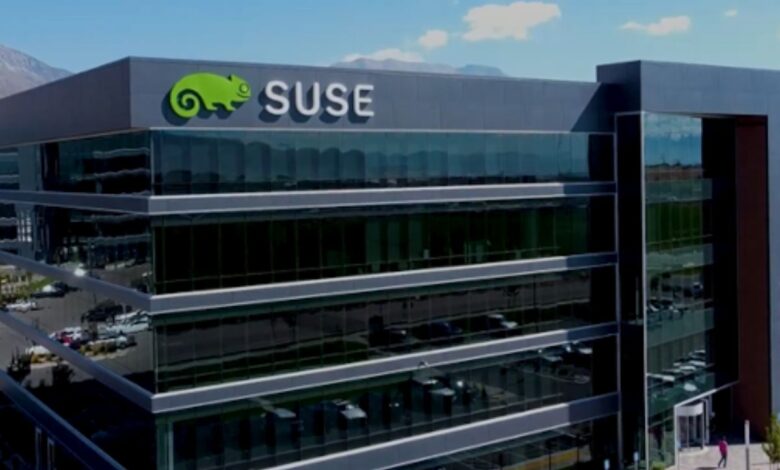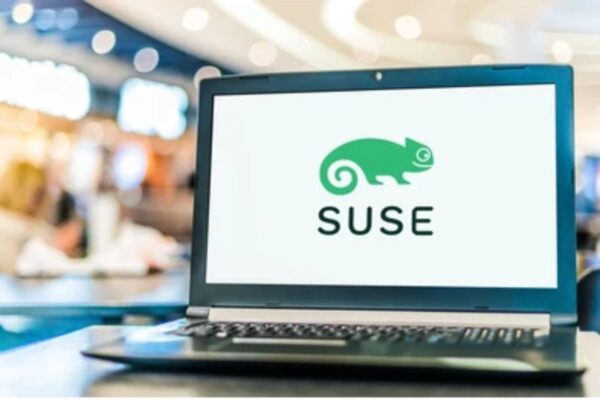Why do SUSE’s intentions to expand globally favor India over other countries?

Why do SUSE’s intentions to expand globally favour India over other countries?
A worldwide corporation called SUSE provides open-source products for businesses that are built on the Linux operating system. Although the company’s current headquarters are in Luxembourg, its original location was Germany, and it has offices all over the world.
Red Hat and SUSE are similar. It puts together the Linux kernel and other open-source parts to create a reliable, feature-rich Linux operating system (OS) that is for sale.
To suit different contexts and workloads, SUSE provides several editions of its operating system. A fully completed Linux-based platform is more suitable for many businesses than spending the time and money installing and maintaining a free, open-source Linux distribution.
Customers receive a stable system with a bought product, along with documentation and technical service. When compared to using an unsupported version of the Linux OS, this may occasionally lead to a reduced total cost of ownership.
SUSE wants a sizable piece of the lucrative market for open-source enterprise technology. Globally, open-source projects are reportedly supported by more than 56 million developers. According to reports, to ensure that their companies are meeting all of their digital needs, over 95% of organisations are looking to open innovations.
It was natural for software behemoths like SUSE to take notice, but even more crucially, to act, given India’s enormous talent pool and the government’s growing drive for open-source technologies. SUSE has launched a brand-new centre of excellence in the Indian state of Bangalore at a time when Big Tech is missing staff. While this is the company’s third such centre worldwide, it is the one where “the lion’s share of the investment is going.”

Imran Khan, Chief Customer Officer at SUSE, chats only with FE’s Saurabh Singh on why India is the best option for the company’s global expansion goals. Excerpts.
Products by SUSE
One of the first businesses to make the Linux kernel available for purchase was SUSE. What started as a small initiative 30 years ago has developed into a multinational business that is a frontiersperson in Linux innovation. In the following four areas, SUSE provides roughly 20 products:
- Server: The company’s main operating system, SUSE Linux Enterprise Server (SLES), as well as editions for three IBM platforms—IBM Z, LinuxONE, and Power Systems—are included in the server products. For the 64-bit Arm platform, SUSE provides an enterprise benefit offering.
- Environments: The products under this umbrella category include SUSE Linux Enterprise Desktop, SLES for SAP Applications, SUSE Linux Enterprise Real Time, SUSE Linux Enterprise Micro, SUSE Linux Enterprise High-Performance Computing, and SUSE on the public cloud.
- Administration and augmentations: These products fall under this category, together with SUSE Manager, SUSE Linux Enterprise Live Patching, and SUSE Linux Enterprise High Availability Extension.
- SUSE Rancher: Products that SUSE acquired after buying Rancher Labs in 2020 fall under this category. SUSE Rancher, SUSE Rancher Hosted, Rancher Kubernetes Engine, K3s, and Rancher Longhorn are a few of the Kubernetes management-focused products in this group.
Why create an excellence centre in India right now?

After the pandemic, different macroeconomic issues have arisen in different parts of the world, but we’ve sought to ring-fence ourselves from much of it. We’re in a great position when it comes to our financials and growth story today, whether it be our top-line ACV or EBITDA, because a lot of technology, especially in the Linux space, is so ingrained in our customers the greatest people to support our three separate paths for our portfolio, India came out on top for a variety of reasons.
Bangalore was our choice because it was a no-brainer. We will be able to search for the ideal talent to support the expansion of our company. Move some of the infrastructures there without decreasing expenditures elsewhere. It is not at all. We want to plug in organic development, and as a result, India will now be a part of our planning for labour entitlement across the organisation.
What is the centre of excellence’s immediate focus areas?
Our focus is mainly on the engineering tasks related to our Linux portfolio. To build that engineering team, we’re seeking an augmented type. After that, we’ll begin to establish a support form there before moving on to SUSE’s other functional areas.
For us, it will be a cross-functional, augmented delivery organisation that covers all the different facets of what we do. Engineering, support, services, and IT are just a few possible options. We may use it to encourage co-innovation.
Because everyone is in one place, you may cross-pollinate the brains of the engineering and support teams to begin to foster the creation and view our roadmap goals. However, we must approach it in manageable steps. Right now, there are roughly 82 persons already present. Over the upcoming months and quarters, we want to rapidly expand that.
How would you describe the original talent pool?
We recently hired a general manager from Salesforce who will oversee the centre of excellence that I am in charge of. The level of expertise we have hired is too technical engineering people in the Linux domain right now. Regarding our container management, we do have a pipeline of candidates that we’re thinking of.
On the engineering side, we choose the Linux domain because that is where our core competencies lie. More than most people, we are aware of that. Instead of mixing everything into one pot, we want to make sure we grow organically in the right way. To begin with, we’d like the proper ingredients to be present.
In the end, they hope to have at least 20% of our entire staff based in the centre of excellence.
How will this centre for excellence be set internationally?

The world will be served by these people. Our global footprint includes this, therefore. They will only have the option of being housed in India. However, they will play a crucial role in creating and assisting with the development of our plan, providing customer support, and doing everything else they do. It won’t, however, be region-specific. From there, they will provide services to the entire planet.
How do you feel about the layoffs at Big Tech?
If you go back to, like, the early 2000s, then we saw some of that following the dot-com boom, but when you look at macroeconomics today and what it’s doing too many tech businesses, some of it is like, wow, this has never been seen before. However, when you take a closer look, you’ll notice that many of the growth companies are going through an upheaval that they have never known before.
Therefore, when you look at Meta, AWS, and all the other businesses that are making important massive layoffs, you’ll see that they aren’t even designed to do that because they don’t know how. They have just been preoccupied with hiring thousands of employees for a very long period. They have never really had to find out how to fire someone before. For that, they don’t have a playbook.
In many of the legacy companies I’ve worked for, we had to do that to survive. But today, it’s a universal phenomenon. It affects everyone equally. And I like to think that in this specific case, because we [SUSE] were a lean organisation, we were insulated from some of the issues outside, weathering the storm of some macroeconomics to help us to place the investment in India where we need it to future-proof us.
Does it, make you wary?
Everybody must take a close, honest look at their current situation, and I believe that you should always do so, just as we should manage our finances regularly. There’s always room to improve.
Yes, we do look at our financials, but it won’t stop us from moving forward because, if we’re not careful, we might enter a paradigm where we stop investing in the business to develop. No one can accurately forecast what will happen, but many people believe it will be another 24 months before we start to see the slump we’re now experiencing.
What is the mission statement of SUSE?
In particular, in our typical Linux domain, we want to be completely open within the walls of the open-source environment. Most of our portfolio is best in class when you think about where we are at this point, which is compelling. Our actual public relations efforts are lacking.
Over 60% of Fortune 500 companies use our technology if you look at that number. We are best in class and outperform all of our competitors in customer satisfaction. With the addition of some of our container management solutions, we help to be more compelling and more of a vendor of choice as well. We have the right ingredients to focus on our technological stack.
What does your portfolio look like right now?
Our company has been divided into three divisions for the past 30 years: business-critical Linux, enterprise container management, and Edge. We were the first to truly present a corporate solution to the market for Linux, which was created a little under or slightly more than 30 years ago.
One of the most commonly used container and cloud-native solutions is Rancher, which we recently bought. This has helped us develop a really strong profile, and in a similar vein, we’re doing a lot of amazing work in the edge arena as well. We were among the first to deploy a fully integrated cloud-native solution that meets the scaling demands of our customers.
To better understand where technology is going, especially in the morning of the landscape of digital transformation, we are going to discuss the three key categories.
Open-source hit tale
The market penetration for Linux, for example, is growing at a rate of 17 to 18 percentage points. Additionally, our receptacle business has experienced growth of between 35 and 40 share points, including Edge and some of the Edge features.
There are thus two distinct forces at play, but as Linux is the traditional market, there is little room for expansion while still enjoying a thriving economy. Then there is cutting-edge technology, which includes the Edge part of our container and is more assertive, particularly in the telco market.






